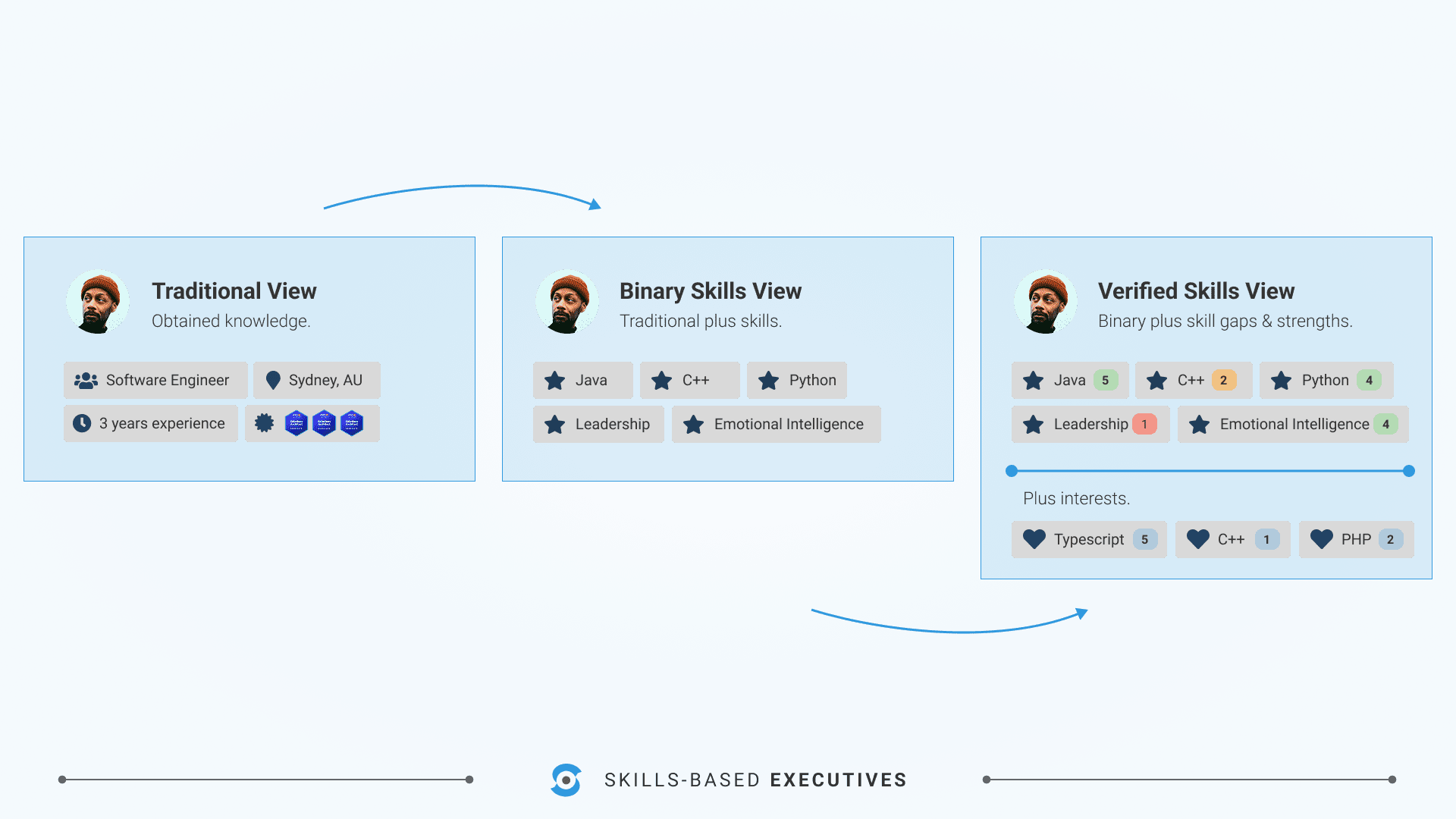Gut Feel Won’t Cut It. Your Competitors Are Using Data. Are You?
In every other area of the business – finance, operations, marketing – executives demand hard data, quantifiable metrics, and rigorous analysis. Yet, when it comes to the engine of the entire enterprise – workforce skills – decisions are often based on anecdotal evidence, subjective manager opinions, or incomplete spreadsheet summaries. This isn’t just inconsistent; it’s strategically dangerous. How can you confidently invest millions in training, allocate resources to critical projects, or assess future readiness without quantifying your organization’s capabilities?
The Strategic Blind Spot: Unmeasured Skills
The failure to systematically measure and quantify workforce skills creates a massive blind spot at the heart of strategic planning. Traditional methods are fundamentally flawed for providing the reliable metrics executives need:
- Spreadsheet Subjectivity: Relying on self-ratings or inconsistent manager assessments stored in spreadsheets yields data that is noisy, unreliable, and impossible to compare across the organization. What does “Expert” truly mean? Who validated it?
- Lack of Granularity: Job titles or broad skill categories don’t capture the specific proficiency levels required for different tasks or strategic initiatives. You might know you have ‘Project Managers,’ but do they have the specific risk assessment skills needed for a complex international launch?
- Static and Historical: Data, even if captured, often reflects past performance, not current, validated capability or future potential. Skills degrade, evolve, and are acquired constantly. Static lists miss this dynamism.
- Inability to Aggregate: Disparate tracking methods make it impossible to roll up skill data into meaningful, enterprise-level executive talent metrics. You can’t see the forest for the trees.
This lack of quantifiable data leads to poor strategic decisions and undermines organizational agility:
- Misallocated L&D Budgets: Misallocated learning and development (L&D) budgets remain a significant challenge for organizations. A study by Harvard Business School Professor Michael Beer revealed that only about 10% of corporate training programs are effective in improving organizational performance. This suggests that up to 90% of corporate training lacks a demonstrable link to business outcomes, leading to significant waste in time and resources. You can read the full report here.
- Suboptimal Talent Deployment: Assigning tasks based on assumptions rather than measured proficiency leads to inefficiencies, errors, and project delays.
- Inaccurate Risk Assessment: Without quantifying critical skill levels (e.g., cybersecurity expertise, regulatory compliance knowledge), organizations underestimate their vulnerability.
- Ineffective Succession Planning: Identifying high-potential individuals for future leadership roles requires objective measurement of their current skills and potential, not just manager recommendations.
The Power of Quantification: Data-Driven Talent Strategy
Making data driven decision making the standard for talent strategy requires a fundamental shift towards objective skill measurement. When you can reliably quantify capabilities, you unlock significant strategic advantages:
- Precision L&D Investment: Allocate training resources with surgical accuracy to close the most critical, quantitatively identified skill gaps, maximizing the ROI of your strategic L&D investment.
- Optimized Performance: Match individuals with the right measured skills to the right tasks and projects, boosting productivity and quality.
- Proactive Risk Mitigation: Identify and address critical skill deficiencies in key areas before they lead to operational failures or compliance breaches.
- Benchmarking & Improvement: Track skill development over time, measure the effectiveness of training programs, and benchmark your capabilities against industry standards.
- Informed Strategic Planning: Conduct accurate organizational capability assessment to understand if you possess the quantified skills needed for future strategic initiatives (e.g., entering a new market, adopting AI).
Enabling Quantifiable Insights: Beyond Spreadsheets
Achieving reliable skill quantification requires moving beyond manual tracking and adopting platforms designed for rigorous organizational capability assessment. These systems provide frameworks and tools to measure skills consistently and objectively across the enterprise.
For example, solutions like Skills Base offer methodologies to establish clear proficiency scales (e.g., Novice to Expert) and enable multi-source validation (self-assessment, manager review, peer feedback, even testing integrations). This creates a dataset of executive talent metrics that is far more reliable and actionable than spreadsheet summaries. The benefit lies in transforming subjective opinions into objective data points, providing the quantifiable evidence needed for confident data driven decision making regarding talent investment, deployment, and risk management.
Measure What Matters Most
Your workforce’s skills are too critical to manage by guesswork. The era of subjective assessments and incomplete data is over. Demand quantifiable insights into your organization’s capabilities.
- Implement systems for objective skill measurement.
- Integrate executive talent metrics into your strategic planning processes.
- Make data driven decision making the cornerstone of your talent strategy.
By quantifying your capabilities, you replace ambiguity with clarity, risk with confidence, and wasted resources with targeted, high-impact investments. Lead with data, not assumptions, and build a workforce demonstrably equipped for future success.
